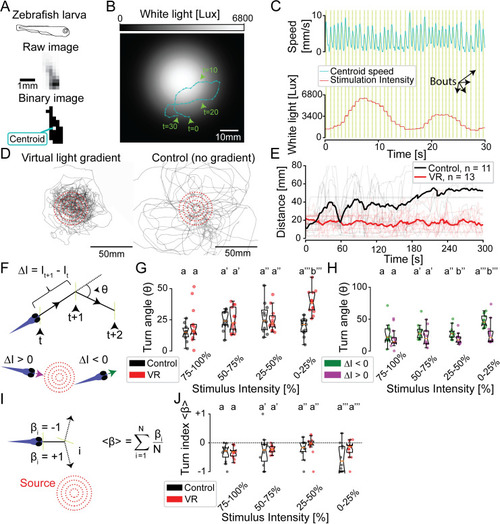Fig 4
- ID
- ZDB-FIG-200724-22
- Publication
- Tadres et al., 2020 - PiVR: An affordable and versatile closed-loop platform to study unrestrained sensorimotor behavior
- Other Figures
- All Figure Page
- Back to All Figure Page
|
(A) Illustration of the identification of a moving zebrafish larva by PiVR. (B) Illustrative trajectory of a zebrafish larva in a virtual-light gradient having a Gaussian geometry. Panel C displays the time course of the speed and the white-light intensity during that trajectory shown in panel B. Yellow vertical lines indicate automatically detected bouts. (D) Trajectories of 13 fish tested in virtual-light gradient (left) and 11 fish in control (right). Red circles indicate 10-, 20-, 30-, and 40-mm distances to the center of the virtual-light source (see |

